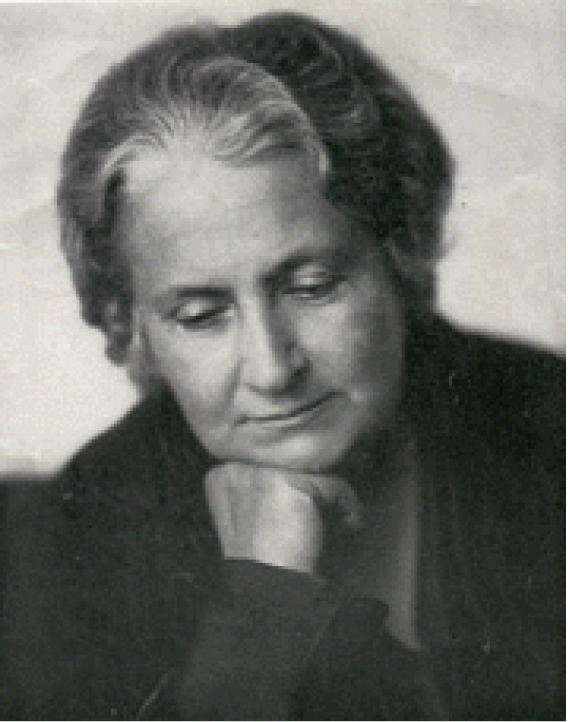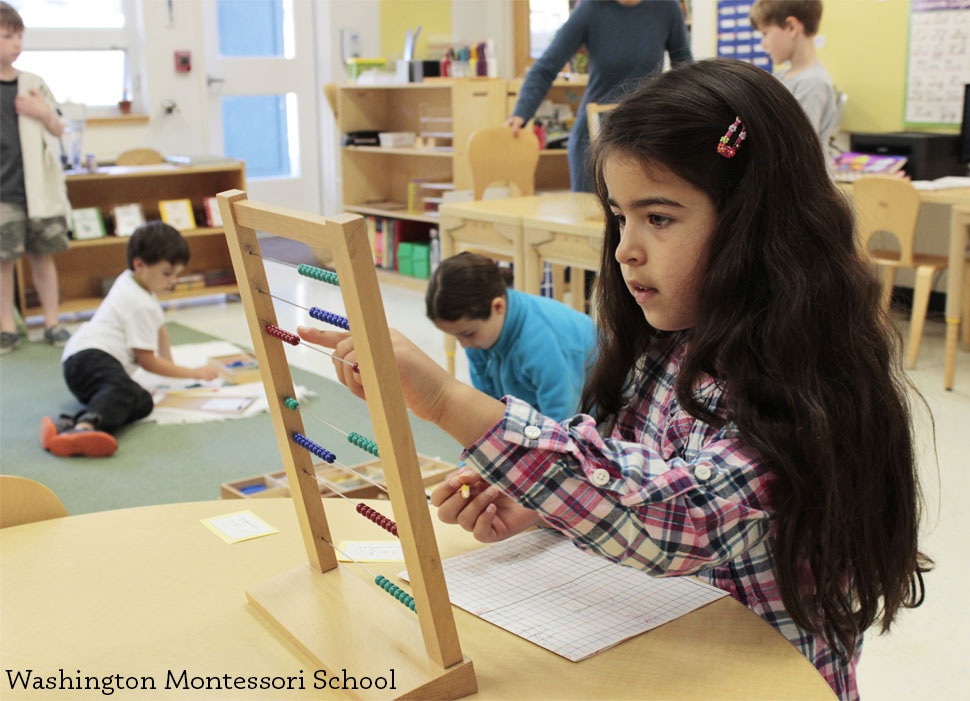About Montessori
 Dr. Maria Montessori (MON-tuh-SORE-ee), the first woman to graduate from a medical school and practice medicine in Italy, was an innovator and a progressive educator. She developed the now worldwide approach to education named for her; Montessori education.
Dr. Maria Montessori (MON-tuh-SORE-ee), the first woman to graduate from a medical school and practice medicine in Italy, was an innovator and a progressive educator. She developed the now worldwide approach to education named for her; Montessori education.
Dr. Montessori’s approach was based on her scientific observation of children around the world. Using her considerable powers of observation gained through her training as a physician and scientist she discerned and described children’s natural learning tendencies from birth through adolescence. She identified what she described as the Four Planes of Development, through which children pass, on their way to maturity and adulthood. The developmental planes are in six year increments: zero to six years, six to twelve years, twelve to eighteen years and eighteen to twenty-four years.
Dr. Montessori went on to develop a comprehensive approach to educationwhich described the specific optimal environment and approach at each plane. The guiding philosophy is based on children’s natural development through the four planes as well as their innate ability and drive to learn.
Common Elements
Since the inception of the first Montessori classroom on January 6, 1907, Dr. Montessori’s ideas and practice rapidly spread around the globe, resulting in training programs and schools opening throughout the world. Montessori schools exist on every continent except Antarctica and have been in existence for over a century throughout Europe and in the United States. There are currently 5,000 independent and private Montessori schools and over 400 magnet and charter Montessori schools across the United States. Dr. Montessori never patented her method. Consequently there are many programs using the Montessori name that do not resemble Dr. Montessori’s very defined approach. The most reliable way to determine if a school offers authentic Montessori education is to determine if they are accredited by or associated with The American Montessori Society (AMS), the most prevalent Montessori organization in the US, or The Association Montessori Internationale (AMI), the international organization that Dr. Montessori set up to oversee the authentic implementation of her method.
Visit a Montessori School for a Classroom Observation
Your visit to a Montessori school for a classroom observation will reveal an environment specially designed to meet the particular needs of the child at each plane of development. However, you will observe several common elements:
- Mixed ages creating a dynamic community
- Free movement facilitating interaction and peer support
- A two and a half to three hour uninterrupted work period
- Individualized instruction based on a child’s ability and pace
- Freedom of choice in work
- Montessori teachers trained for the level at which they work
Each school will reflect its own particular culture. A visit to a school is recommended as the best way to learn more about what Montessori education has to offer for your child.

Some of the distinguishing characteristics of an authentic Montessori program:
The single focus of the Montessori approach at every level is to facilitate and support the child in his/her own self construction. In the process we:
- cultivate each child’s natural desire to learn
- foster a strong work ethic along with the tenacity to overcome obstacles and master skills
- support the child’s development of responsibility and cooperation within a community
- foster a strong sense of self
The Method addresses the whole child developing social skills, emotional growth, physical coordination, and cognitive preparation within a thoughtfully designed environment. The centrality of the child is evident; the teacher supports and guides rather than dominates the learning process.
The classrooms or “prepared environments” are mindfully arranged to meet the developmental needs of the child. Each environment is prepared with an extensive variety of specially designed Montessori materials which are didactic in nature, multi-sensory, sequential and often self-correcting.
Multi age grouping: the classes are ideally composed of a 3 year age span for both elementary and primary programs, as well as toddler level programs. The class will include children ages 18 months – 3, 3-6, 6-9, 9-12 or 12-15. This developmental grouping allows a dynamic and interdependent community that facilitates peer teaching, broad social interactions, collaboration, networking, individual differences in learning style and pace, problem solving, and critical thinking. This arrangement provides the youngest students with a graded series of role models and the older students with peer teaching opportunities for reinforcement of learning. This thriving Montessori community is a direct preparation for life.
The Teacher holds a specific Montessori certification for the level at which he/she teaches as well as a minimum of a bachelor’s degree.
An independent and uninterrupted work period flow for 2 to 3 hours. Special programs (music, art, physical education etc.) take place outside of the dedicated independent work cycle or are integrated seamlessly into the course of the work cycle.
Individualized Instruction: Each child learns and develops at her/his own pace through the use of materials and lessons introduced by the certified teacher. The integrated and comprehensive curriculum is introduced sequentially and at the developmental level of each individual child, allowing each student to work to capacity at their ability level in order to develop their fullest potential.
Partnering with parents is evident. Schools provide parent education promoting the understanding of the Montessori principles and curriculum, meetings to discuss child’s progress as well as support for the various challenges of parenting.
“The environment must be rich in motives which lend interest to activity and invite the child to conduct his own experiences.”
– Maria Montessori –


